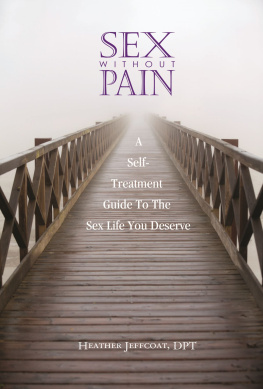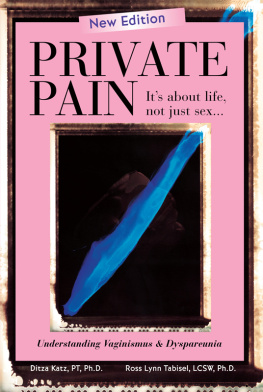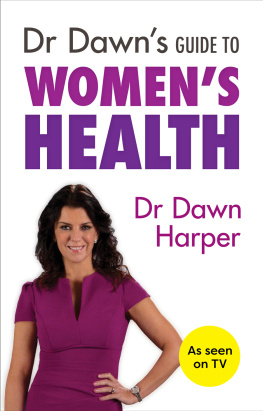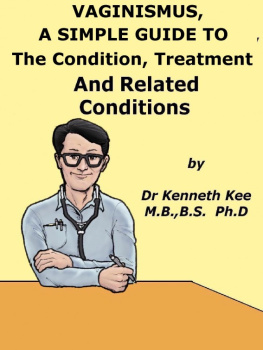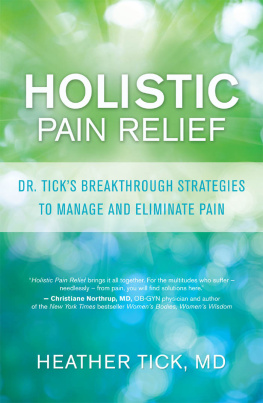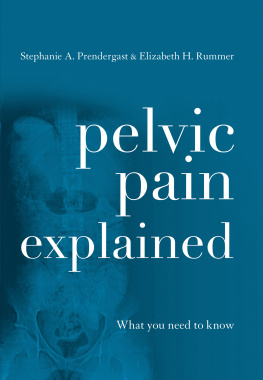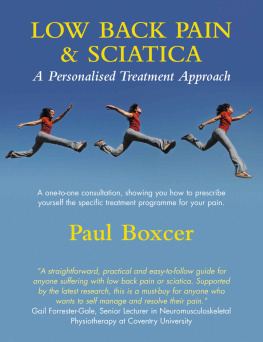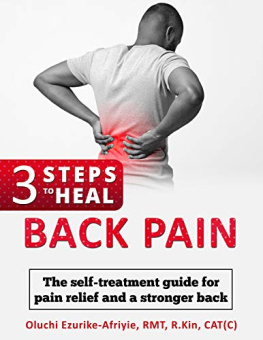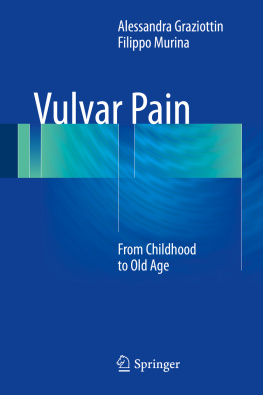SEX WITHOUT PAIN
A Self-Treatment Guide
To The Sex Life You Deserve
by
Heather Jeffcoat, DPT
Sex Without Pain: A Self-Treatment Guide To The Sex Life You Deserve
Heather Jeffcoat, DPT
2014, Heather Jeffcoat, DPT. All rights reserved. No part of this book may be reproduced or transmitted in any form or by any means, electronic or mechanical, including photocopying, recording or by any information storage and retrieval system, without written permission from the author, except for the inclusion of brief quotations in a review.
Printed in the United States of America
Active Orange Publishing
Los Angeles, CA
For more information about this book and additional, updated resources, visit:
FusionWellnessPT.com
Terminology used in Chapter One: Defining Your PainWhat Are Trigger Points? conforms to the definitions recommended by The International Continence Society and the following book:
Travell, Janet G., MD and Simons, David G., MD., et al. Myofascial Pain and Dysfunction: The Trigger Point Manual, Second Ed. Philadelphia, PA: Lippincott, Williams & Wilkins, 1998.
Transitional Exercise Three in Chapter Six: Transitioning to Intercourse is used by permission from the following book:
Penner, Clifford L., Ph.D, and Penner, Joyce J., RN, MN. Restoring The Pleasure: Complete Step-by-Step Programs to Help Couples Overcome the Most Common Sexual Barriers, Second Ed. Nashville, TN: W Publishing Group, 2014.
Cover Design by Kristin Williams
Illustrations by Rose Perry (Artist) and John Dorn, MA (Advisor)
Photography by Julia Swain
Exercises modeled by Lucia Shashoian
This edition was prepared for publication by L.E. Deason/Fools Errand, LLC.
AUTHORS NOTE: The information in this book is not intended to substitute for an individual diagnosis or comprehensive treatment plan. The author strongly urges readers to seek the advice of a licensed professional healthcare provider before beginning this, or any other, self-treatment and/or exercise program.
ABOUT THE AUTHOR

Heather Jeffcoat, DPT, received her Doctor of Physical Therapy degree from Duke University and her Bachelor of Science in Animal Physiology and Neuroscience from the University of California-San Diego. She also holds Comprehensive Teacher Training Certification in Pilates from Body Arts and Science International, and is a Certified Fascial Stretch Therapist through the Stretch To Win Institute.
Heather specializes in treating orthopaedic and womens health physical therapy diagnoses, as well as developing personalized perinatal fitness programs. Her primary interests are treating pelvic pain and pregnancy and postpartum related disorders as well as tension headaches and pain or dysfunction in the neck, shoulder, low back, and sacroiliac joint. She often partners with physicians and sex therapists both at the Southern California Pelvic Pain Center and in the Los Angeles medical community.
Heather also enjoys significant involvement with the American Physical Therapy Associations Section on Womens Health. In addition to writing and editing numerous articles distributed nationwide, she has been a featured writer on BabyFriendlyLA.com and authored a long-running quarterly column, Perinatal Wellness, for the International Childbirth Education Association Journal.
Heather currently teaches wellness and restorative classes for women and provides patient care and personal training in the greater Los Angeles area, where she lives with her husband and two children.
ACKNOWLEDGEMENTS
Like my treatment program itself, this book would have been nearly impossible to complete without the support I have received from my own personal and professional team. I owe each of them a tremendous debt of gratitude. My deepest thanks go out to the following people:
Jennifer Briggs, DPT, for her many notes and invaluable input on the text and images; and to the many other friends and colleagues who provided generous, insightful review and feedback throughout the writing and editing process.
Kathe Wallace, PT, and Holly Herman, PT, my mentors in the art and science of pelvic floor physical therapy, who literally helped me to navigate my first pelvic floor.
My mom and dad, Katherine and William, for instilling in me the drive to do better than the last time for myself and for others. Its a value that has propelled me to every success of my personal and professional life.
My husband and children, whose continual love and support is my greatest source of strength. Devon, thank you for all the schedules you juggled, all the dinners you made, and all the play dates you executed to give me kid-free, stress-free stretches of time to write. Kieran and Brendan, thank you for watching Daddy and keeping him well entertained on Mommys writing days, and for always greeting me at the door with bright smiles and big hugs. You make my life endlessly better.
This book is dedicated to the patients Ive treated over the last decade. Your feedback has helped me to revise my techniques and achieve quicker outcomes for future patients, and it is the reason this book exists. Your trust in me is humbling; your courage and perseverance is inspiring; and your continued success and happiness is the greatest professional reward I could ever receive.
INTRODUCTION
Frustrating. Confusing. Devastating. These are just a few of the words women use to describe pain during intercourse, a condition that affects far more people than even many physicians realize. If you, or your partner, are struggling in this areaplease, keep reading. The answers youve been looking for are here; and to find them, you wont have to sift through confusing medical jargon or humiliating suggestions that your problems are all in your head. My promise is to keep things simple and get to the heart of what matters most to yougetting better!
Although I have included some of the why of this widely misunderstood condition, this is primarily a how to book; and the reason is simple. Pain during intercourse is often a physical problem that is misdiagnosed as a purely psychological one. Of course, there are psychological considerations. If you experience pain every time you have intercourse, how can it not get into your head? But in my professional experience, the problem seldom starts there. Being crazy isnt causing your pain; but the pain can make you feel crazy.
The information in this book has helped many women break that cycle, and Im confident it can do the same for you. But because trust is such an important factor in healing, lets start with a bit of information about me. Im a physical therapist with more than a decade of specialized professional experience in treating women with pelvic floor muscle disorders. Patients, and even fellow medical professionals often ask me the same question.
How did you decide to do this?
When I started my physical therapy training at Duke University, I thought I wanted to specialize in pediatrics. As I continued my studies, I also explored the worlds of general orthopaedics and sports medicine. While at Duke, I was fortunate to have ongoing exposure to the new and growing field of womens health physical therapy. I loved the one-on-one interaction with patients it provided, as well as the opportunity to work with an extremely underserved patient population; and, ultimately, the idea of being able to help people with such personal issues seemed truly rewarding.
As I began my practice, I quickly realized how little the larger medical community actually knew about pelvic floor conditions that can lead to pain during intercourse. Suddenly, I had a missionto educate physicians, nurses, psychologists and other specialists about how
Next page
